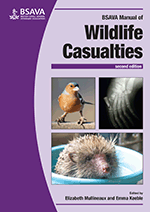
Full text loading...

Hedgehogs are easily recognized by their distinctive spines and are familiar to most people as they often inhabit parks and gardens near to human habitation. Their popularity, relative abundance and easy capture make them one of the most common wildlife patients presented for veterinary attention, with thousands taken into care annually. This chapter covers: ecology and biology; anatomy and physiology; capture, handling and transportation; clinical assessment; first aid and hospitalization; anaesthesia and analgesia; specific conditions; therapeutics; husbandry; rearing of hoglets; rehabilitation and release; and legal considerations.
Hedgehogs, Page 1 of 1
< Previous page | Next page > /docserver/preview/fulltext/10.22233/9781910443316/9781910443316.12-1.gif

Full text loading...














